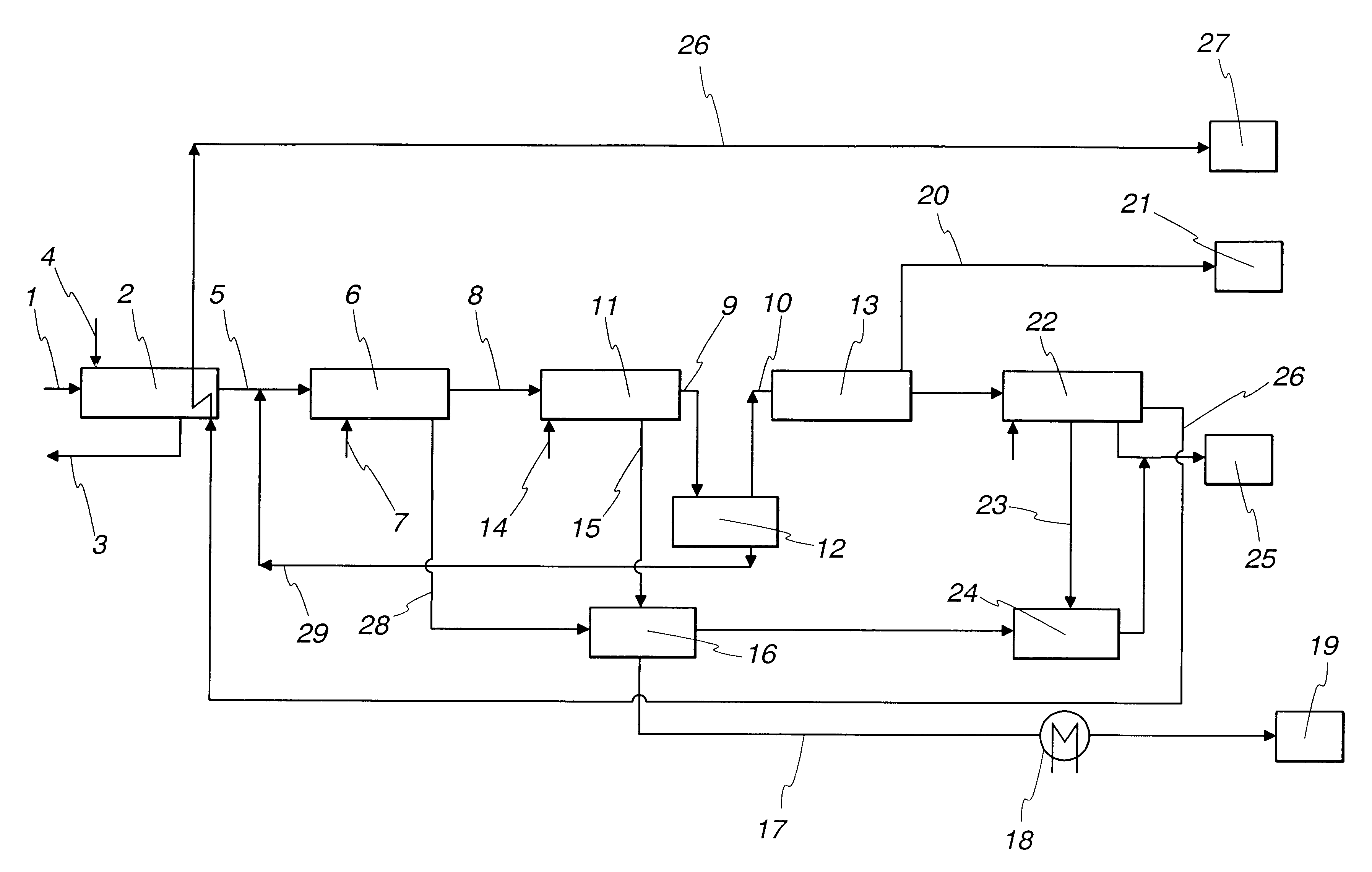Method of removing the fibrous shells from cereal grains
a technology of fibrous shells and cereal grains, which is applied in the field of removing fibrous shells from cereal grains, can solve the problems of large water volume, large energy consumption, and high additional cost of dumping and processing of this kind of water, and achieve the effect of minimizing the risk of dust explosion
- Summary
- Abstract
- Description
- Claims
- Application Information
AI Technical Summary
Benefits of technology
Problems solved by technology
Method used
Image
Examples
Embodiment Construction
The invention is further illustrated by the following non-limiting examples.
A quantity of corn grains (1000 g) was steeped for 1 hour in a large volume of water (1,5 l), whereby the moisture content initially being 16.0% by weight was raised to 25.05% by weight. The corn thus preconditioned was completely immersed in a bath of liquid nitrogen (at about -190.degree. C.) for 1 sec., thereby cooling the shell strongly and rapidly, while the interior was cooled to a much lesser extent. Immediately following this thermal shock the corn was milled in a mill of the centrifuge type, available at MicroTec. This mill having a housing with a conical shape, which functions as a stator, can be provided with 3 blades, an upper blade, which is called an impact blade, and two adjacent blades, disposed below the impact blade. The distance between the blades and the housing was adjusted at 5 mm, so that in any case the germs would not be damaged. In example 1 the impact blade was not used. The finest...
PUM
 Login to View More
Login to View More Abstract
Description
Claims
Application Information
 Login to View More
Login to View More - R&D
- Intellectual Property
- Life Sciences
- Materials
- Tech Scout
- Unparalleled Data Quality
- Higher Quality Content
- 60% Fewer Hallucinations
Browse by: Latest US Patents, China's latest patents, Technical Efficacy Thesaurus, Application Domain, Technology Topic, Popular Technical Reports.
© 2025 PatSnap. All rights reserved.Legal|Privacy policy|Modern Slavery Act Transparency Statement|Sitemap|About US| Contact US: help@patsnap.com


